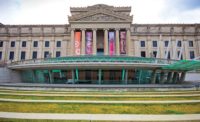
Stephen E. Selkowitz, an expert on fenestration, daylighting and lighting, knows that laboratory tests alone are not enough to push the needle forward on building energy performance. "We need to test integrated building systems in the real world," says the senior adviser for building science of the Lawrence Berkeley National Laboratory.
Toward that end, Selkowitz helped conceptualize a two-year "living lab" study in Manhattan that should be completed in 2015. It is yet another brainchild of Selkowitz, the mastermind behind the Berkeley lab's just-completed Facility for Low-Energy Experiments in Buildings.
The Berkeley lab has partnered with Green Light New York Inc. (GLNY) and several government and foundation sponsors to develop a pair of demonstrations of off-the-shelf lighting, daylighting and shading systems in occupied Bank of America office space at One Bryant Park and in Goldman Sachs office space at 200 West St. The demos will monitor electricity consumption, including plug loads, of an office floor and compare it to pre-retrofit performance and monitored control space.
"If we save energy, we are going to look to replicate the demo throughout the 1.8 million square feet we lease and possibly throughout the Bank of America's real estate portfolio," says Tim Guarnieri, BoA regional project director. The bank, which will pay for the actual retrofit, is hoping vendors will contribute their wares for the test.
New York City has 5.5 billion sq ft of real estate, including 100 million sq ft ripe for daylighting retrofits, says Richard Yancey, GLNY's executive director. "If you can attack the problem of poor building performance here, there can be a huge multiplier effect nationally and internationally."





















Post a comment to this article
Report Abusive Comment